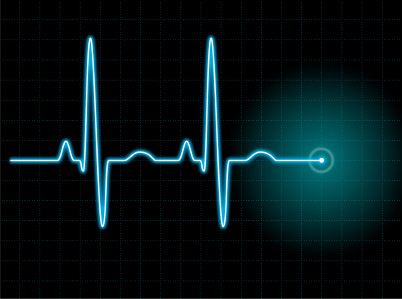An electrocardiogram (ECG or EKG) is a picture produced by an electrocardiograph. An EKG records the electrical activity of the heart over a short period of time. Its name is made of different parts: electro, because it is related to electric, cardio, Greek for heart, gram, a Greek root meaning “to write”.
Electrical waves cause the heart muscle to pump. These waves pass through the body and can be measured at the electrodes (electrical contacts) which are attached to the skin. Electrodes placed on different sides of the heart measure the activity of different parts of the heart muscle.
An ECG displays the voltage between pairs of these electrodes, and the muscle activity that they measure, from different directions. This display measures and indicates the overall rhythm of the heart, and weaknesses in different parts of the heart muscle. It is the best way to measure and diagnose abnormal rhythms of the heart. It is used particularly to find abnormal rhythms caused by damage to the conductive tissue that carries electrical signals, or abnormal rhythms caused by levels of salts, such as potassium, that are too high or low.
In myocardial infarction (MI), the ECG can identify damaged heart muscle. But it can only identify damage to muscle in certain areas, so it can’t rule out damage in other areas. The ECG cannot reliably measure the pumping ability of the heart. Your doctor may order an ultrasound for this if there is an indication to do so.
